The world of hairless dogs
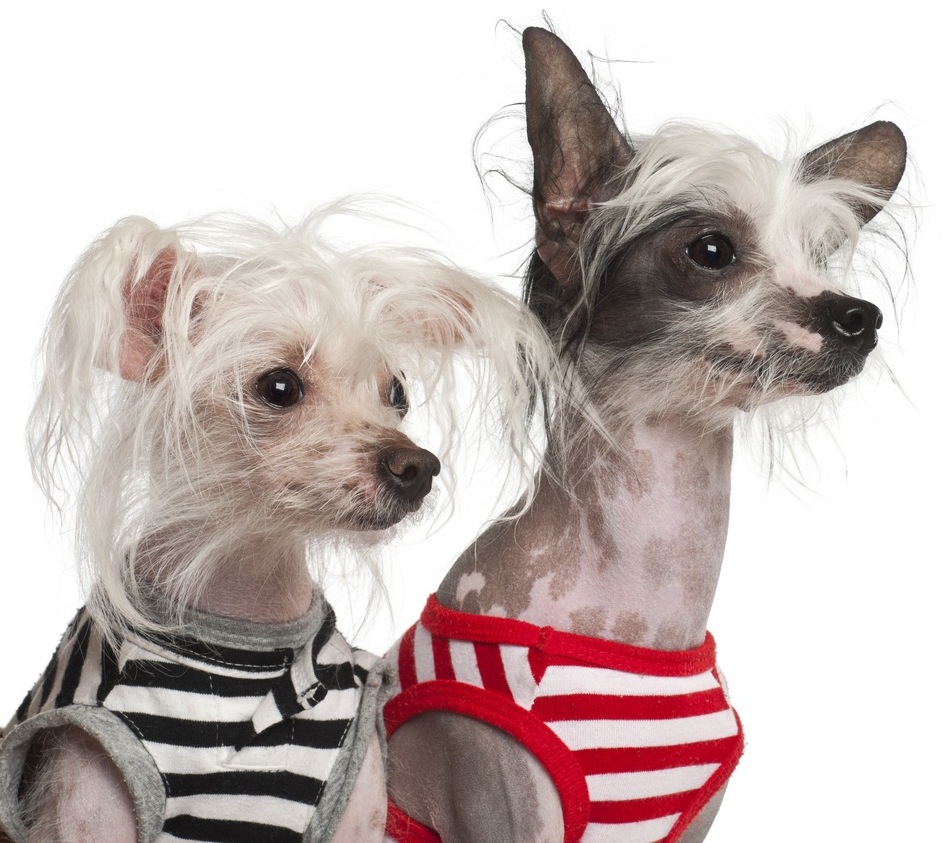
Although they are often recommended for allergy sufferers because of their lack of coat, there are few things that divide dog-lovers more than the appearance of these small to medium-sized breeds. Many people dislike them almost instinctively, although it is easy to be won round by their personalities when you actually meet them.
Hairless dog, cat and ratLoss of hair is a mutation that crops up regularly in pets. There are guinea pigs and rats of this type, and even hairless cats, such as the Sphynx. The most common breed of hairless dog today is the Chinese crested, which occurs in two very distinctive varieties.
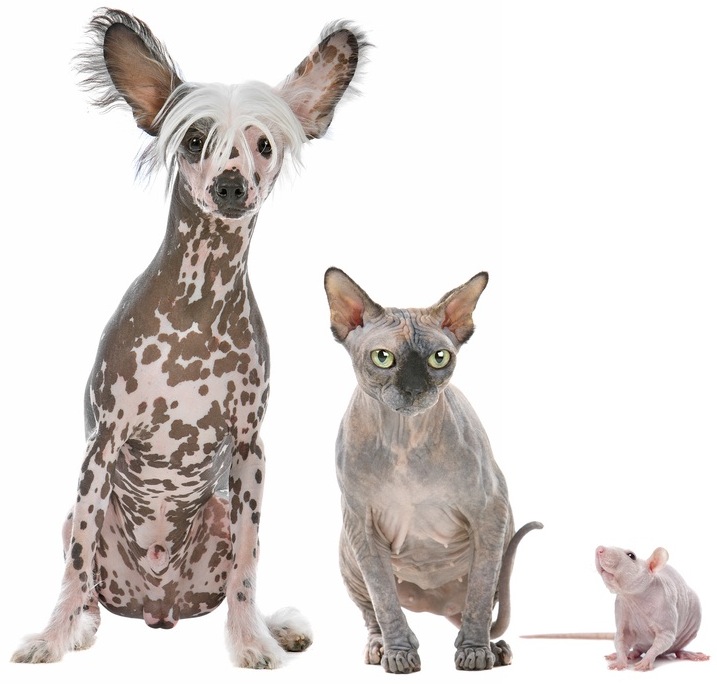
The powderpuff is the name given to the form with normal length hair, in contrast to the hairless version, which has hair confined to the extremities of its body. Chinese crested dogs have been kept for centuries in their homeland, but were not seen in the West until the 1880s. Both powderpuffs and hairless individuals are likely to crop up in the same litter, as with the other hairless breeds, and they are mated together in breeding programmes.
Ancient American breeds
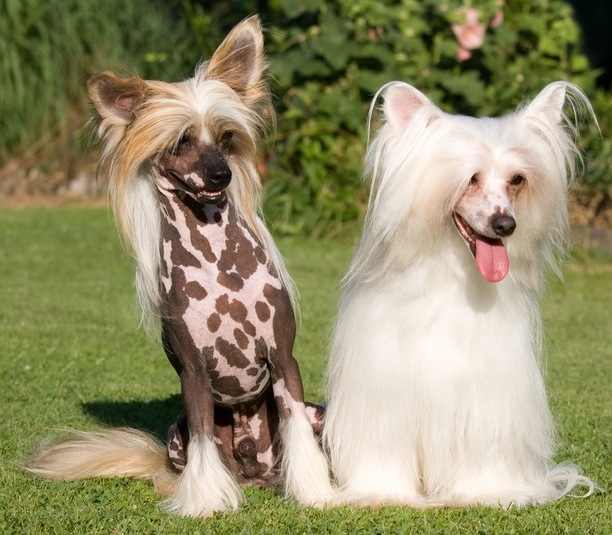
In parts of Central and northern South America, hairless breeds have also been known for thousands of years, outliving the civilisations which created them. The Mexican hairless dog or Xoloitzcuintli (pronounced sholo-its-quintli) occurs in three different sizes. It nearly became extinct in the 1950s, after a long history dating back to the ancient Aztecs, who used these dogs not only as bed warmers but also on occasions for ritual sacrifices and as a source of food. Xoloitzcuintlis tend to be dark-skinned, as seen here, with far less hair on their head, legs, feet and tail than in the case of the Chinese crested dog.
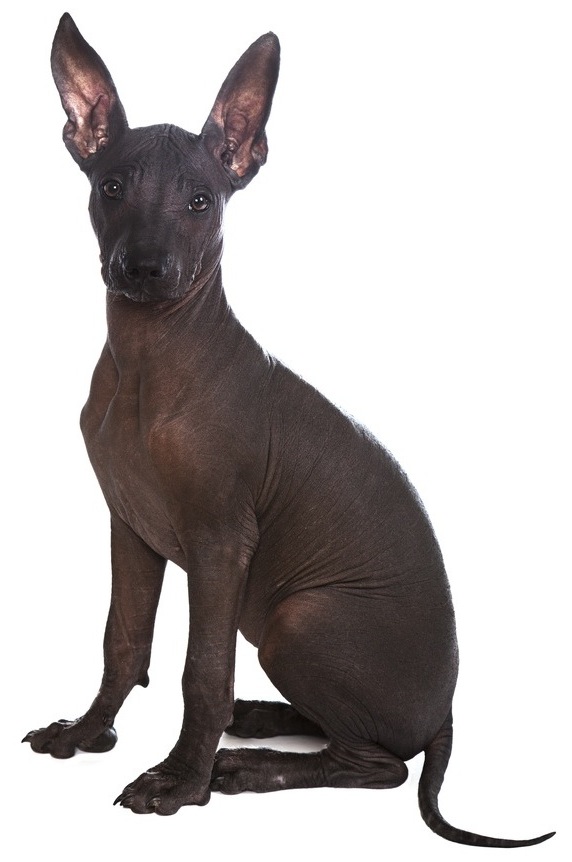
Further south, the Peruvian hairless dog served similar roles in Inca society. These dogs also have darkish skin, often with a light tuft of hair on the head, depending on the individual, but are probably unrelated to the Mexican breed. The Inca moonflower dog is just a colour variant, which was traditionally only allowed out at night, so as to protect its pink mottled skin from the risk of sunburn.
The rarest member of this group of breeds alive today is the golden Ecuadorian hairless dog
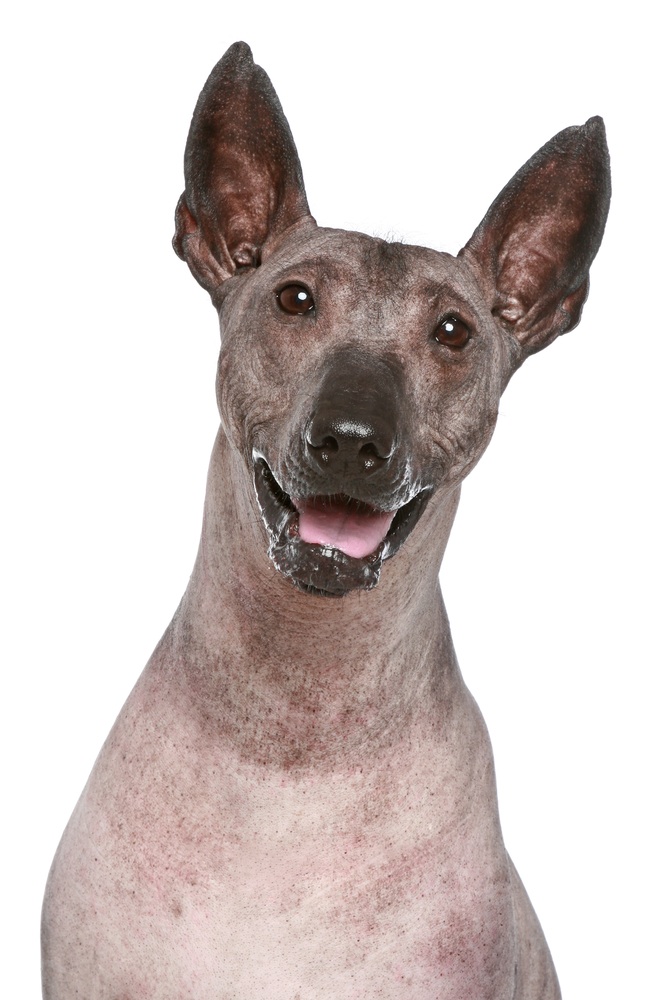
There is evidence that others used to exist in this part of the world however, notably the Mayan hairless dog, which has been identified from archaeological artifacts. It lived around 1000AD, and also had a light skin colour.
Care needs
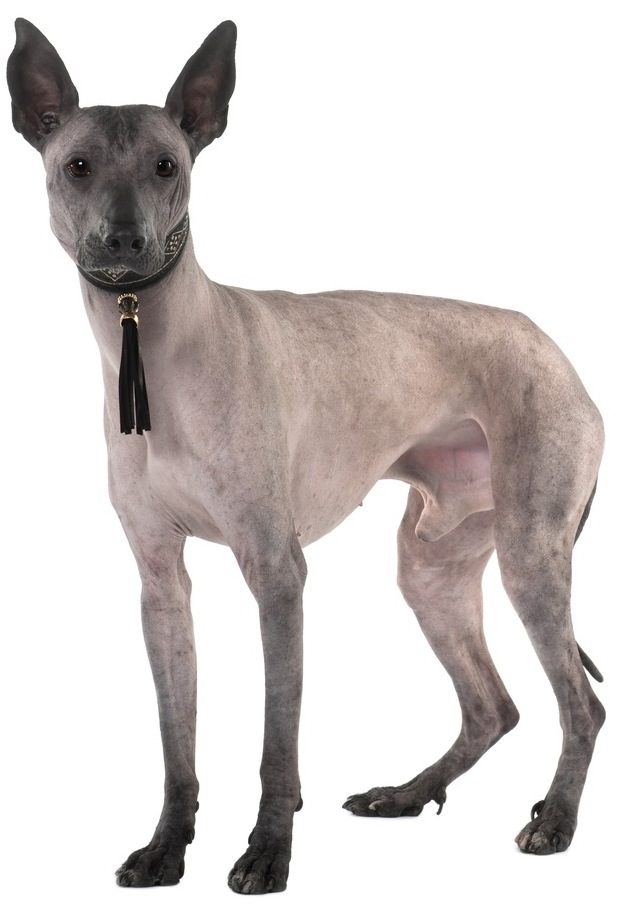
An unusual quirk of such dogs is that besides loss of hair, they also usually have fewer teeth in their mouths than normal, and may suffer from dental problems. Their care is also more demanding than might be thought, because although they may not need intense grooming, they are vulnerable to sunburn and yet feel the cold readily as well.